Did you know snake plants always grow up straight? But what if one day, your beloved snake plant isn’t growing up?
Snake plants are versatile plants that look beautiful and can be maintained with care. In general, these plants can grow up to three inches in 4 weeks. Sometimes these easy-growing plants’ growth rate may fall due to some reasons. It is okay to neglect this situation in winter, but if you still feel that the plant is not growing in the summer, it is time to keep an eye on the plant. You need to take some stress to handle this case and improve the growth rate.
In this article, we are going to discuss the factors that influence the growth rate of the snake plant and the tips to get the plant on trackback!
Why is my snake plant not growing?
As these Snake plants are hardy plants they will not get affected by the diseases often and they cannot be killed easily. But if you neglect the plant for a long time, you may observe some problems in the growth of the Snake plant.
One of the most bothersome things for a plant-grower while growing a snake plant is the fall in the growth rate of the plant. These plants stop their growth when they are facing some problems, which may be due to a lack of proper care or due to climatic conditions. Let us now know the 13 causes for the drop in the growth rate of the snake plants!
1. Climatic conditions that stop the growth of the Snake plants
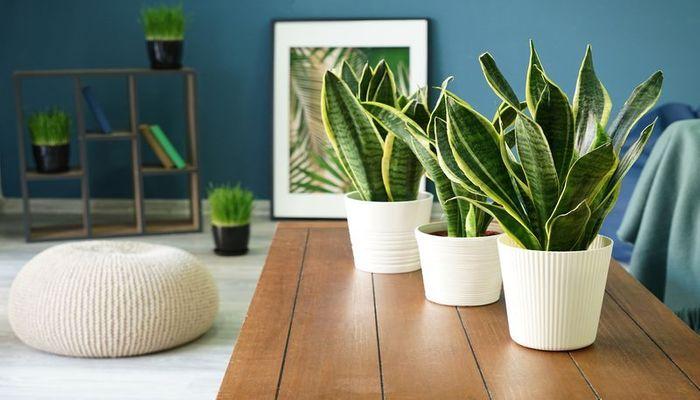
The natural and main reason for the stop of the growth in the snake plants is a change in the climatic conditions. The Snake plants are indeed succulents that thrive in warm and dry conditions and stop growing during the winter season. You can observe a drop in the growth of your plant when the temperatures fall.
If you are a new gardener, you may get worried when you see this. No need to worry because it is the nature of Snake plants. Just place them in a warm place that gets maximum bright indirect light and water it only when the soil is dry this helps the plant grow better. But if your plant has stopped growth during the summer, then you need to look for the other reasons that are mentioned below.
2. Snake Plant not Growing due to Lack of Light
As we all know, sunlight is one of the crucial elements in growing a plant. Especially plants like Snake plants, need bright indirect sunlight to survive. Snake plants need at least 6 hours of moderately bright light to thrive. It does not get enough light, it may fall sick and you can observe the drop in its growth.
Sunlight helps the plant in converting oxygen and water into carbohydrates that transform the nutrients that are absorbed from the soil into energy. Also bright light does not let the soil wet. If you feel that it is the reason for the slow growth of your plant, provide enough light to your plant.
3. Overexposure to the sunlight of the snake plants
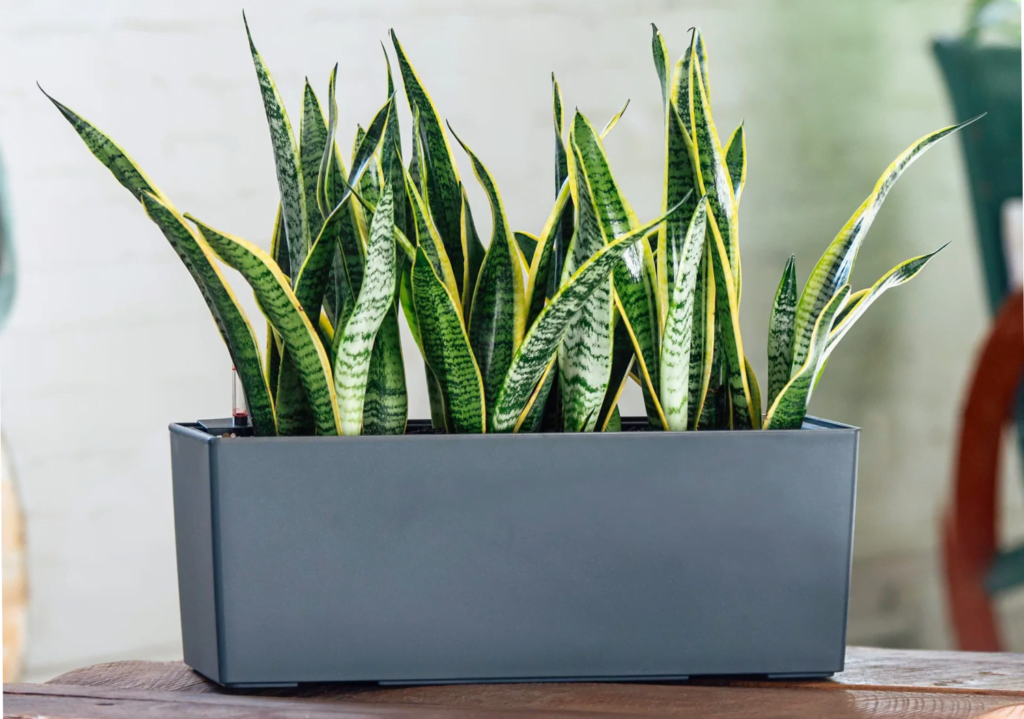
Overexposure to sunlight can also affect the plant. When you place your plant outdoors, on the windowsills, or in the places that get direct sunlight, make sure that it is placed in a shade that gets only indirect sunlight. Direct sunlight can badly damage your Snake plants, intense rays of the sun can burn the sensitive leaves of the plant and thus cause stress in the plant which leads to a drop in the growth rate of your Snake plant.
Your snake plant will thrive if it gets direct sunlight in the early mornings and the late afternoons, but in the afternoon sun rays do harm your plant. The sun rays that travel through the window glass can also damage the plant so, it is better to use window drapes during the summer if your plant is near to the window.
4. Snake Plant not Growing due to Under Watering
Water supplies nutrients from the soil to the parts of the plants, which helps to form energy. Also, plants use water in the formation of carbohydrates. So, water helps a lot to encourage the growth of plants. Your plant may stop its growth if it does not get enough water.
It is a known fact that succulents do not need much water to thrive, but if you do not provide enough water to your Snake plant, it shows its effect on the growth of the plant. Watering the plant whenever the soil becomes dry, helps the plant to thrive.
5. Snake Plant not Growing due to Overwatering

One of the most serious problems in the plants is caused by overwatering them. Overwatering the plant leads to root rot. We know that roots are responsible for the survival of the plant and the rotten root fails to function properly which leads to a drop in the growth rate of the plant.
Snake plants are succulents; they do not like to sit in water for a long time. As these plants are to be grown under indirect sunlight, the soil does not dry too quickly. The waterlogged soil can cause rotten roots. Water them only after the soil becomes dry.
6. Snake Plant not Growing due to Pot Size

It is important to select a suitable pot for planting your Snake plant. The plant should stay in the pot for at least a year or so, for maintaining the health of the plant, you should select a good pot. Also, you should consider three things that we have discussed below to select the best pot for your snake plant.
a) Material of the pot for the snake plants
Pots that are made up of plastic, wood, fiber, and other such materials do not allow aeration in the soil. So, using these types of pots for planting your Snake plant is not a good idea.
Instead, you can use unfinished terracotta pots, clay pots and unglazed ceramic pots are the best choices. Because these pots have porous walls the soil mix will dry faster and keep the root system healthier.
b) Size of the pot for the snake plants
The pot which is used to plant a Snake plant should be one or two inches larger than the plant’s root system. Less than that will control the growth of the roots that cause root-bound or pot-bound roots which eventually cause root rot and finally lead to a fall in the plant’s growth rate.
Larger pots that are filled with the soil will hold the water for a long time which may result in root rots or the growth of fungus in the soil mix. Thus it affects the growth of the plant.
c) The drainage system of the pot for the snake plants
It is the most important thing to consider while buying a pot for planting. The drainage system of the pot plays a crucial role in maintaining the plant’s health and thus in its growth. Select a pot that has a good drainage system to drain the excess water out of the pot. More drainage holes will make the pot better.
7. Snake Plant not Growing due to Poor Soil

Being succulents these plants love to stay in a well-draining soil mix. If the soil you have used to plant your snake is not a well-draining one, it holds the water for a long time and this waterlogged soil causes root rot and other such issues. Also, compact soils get down and get stuck to the drainage holes and may stop water from draining out. This too leads to root rot. Use a cactus mix or the soil mixed with coarse sand for planting the Snake plants.
8. Temperature and Humidity of the snake plants
Temperature and humidity will also show a significant role in the plant’s growth. Snake plants love to be in warm and dry weather conditions. They can tolerate a little higher temperatures than their suitable range but the lower temperatures can drop their growth. The snake plants thrive at room temperatures.
The suitable range of Snake plants is 60-80 degrees Fahrenheit. The temperature up to 90 degrees may not harm the plant but the temperature above 90 degrees and below 50 degrees do. So, maintain the temperature range to boost the plant’s slow growth.
While talking about humidity these plants thrive if the humidity level is around 40%. More than this may lead to fungal diseases which stop the plant’s growth. lower humidity levels to harm the plant by drying the foliage.
9. Repotting the snake plants
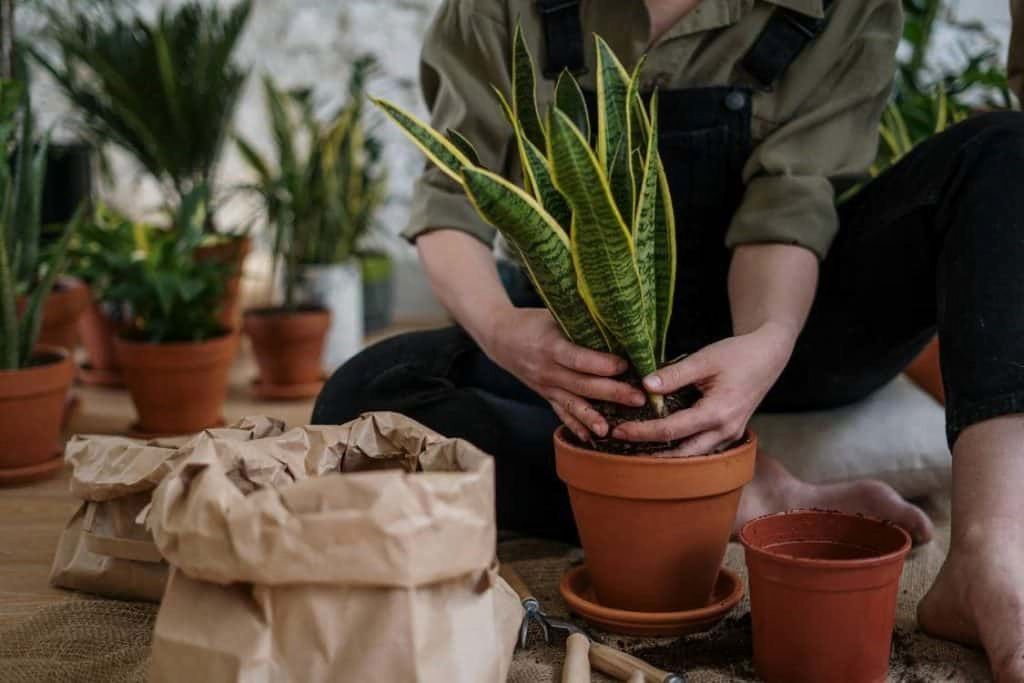
Snake plant care guides include repotting it regularly. If you neglect repotting it for 1-2 years, the newly grown roots are suppressed in the small container and thus stop the growth of the plant. Also, while repotting you get a chance to change the futile soil mix and the fresh soil will help the plant’ healthy growth by supplying more nutrients. Fill the bottom layer of the pot with gravel, while repotting. This helps to avoid soil clogging the drainage system and allows the water to drain quickly.
10. Lack of fertilization of the snake plants
These snake plants do not require frequent fertilization to thrive. They grow well in the growing season and slow down during winter. But, if you feel that your snake plant is growing slowly, then you can feed it enough to boost its growth. Fertilizing twice or thrice a year keeps the plant healthier. Because the plants which are planted in pots do not get enough nutrients, the soil becomes futile and this leads to the fall of your Snake plant growth. Fertilization supplies the nutrients to the plant through the soil and water. Use mild fertilizers to feed your plant as these snake plants cannot tolerate concentrated ones.
11. Snake Plant not Growing due to Over-fertilization
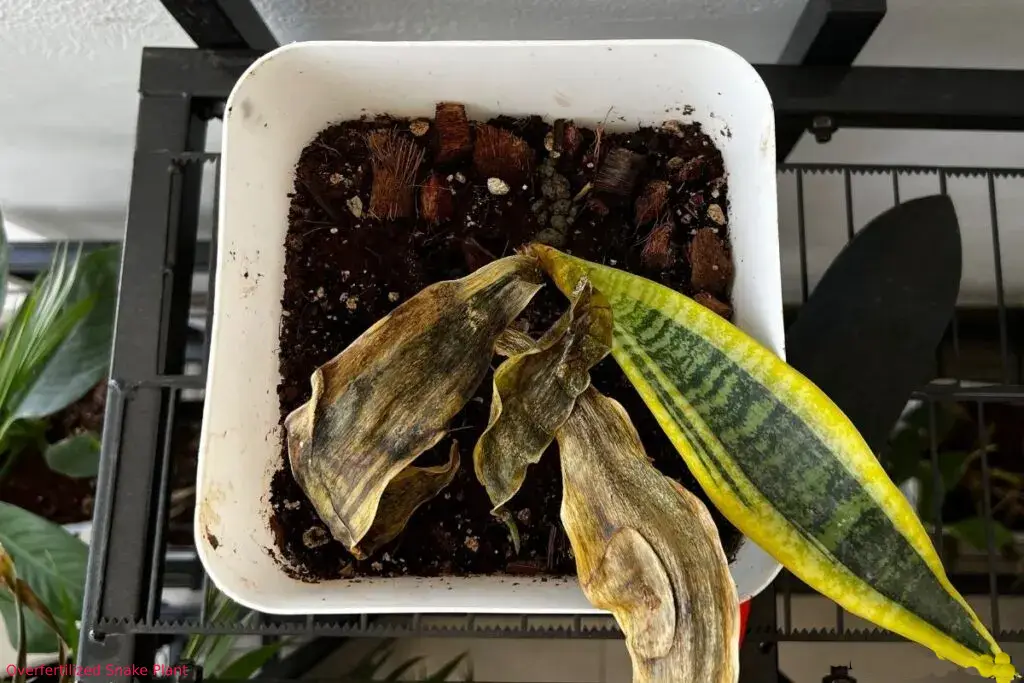
Even over-fertilization can lead to growth-drop in the plant. Because these plants are succulents that do not tolerate heavy feeding that causes stress in the plant. Due to this, the plant may stop growing for a while. Overfertilization can burn the sensitive roots of the snake plants. Do not use concentrated fertilizers to fertilize your snake plant. It is better to dilute the fertilizer before fertilizing the plant.
You can also use cactus or succulent fertilizers or mild fertilizers to feed your plant. Do not fertilize it often, it is enough to feed it once or twice a month during the growing season and avoid fertilizing it in the winter to prevent the problem.
12. Pests and diseases that attack Snake plant

Snake plants are hardy plants that are rarely affected by pests or diseases. But, once it gets affected, it slows down the plant’s growth rate. Providing proper care is necessary. Here’s a list of all potential pests and diseases that can attack snake plants;
Sap-sucking pests on snake plants:
Mostly sap-sucking pests are common in snake plants. Here are the features of some typical sap-sucking pests that influence snake plants negatively.
Aphids: These are soft-bodied insects that are about the length of a pinhead. These tiny sap-sucking insects are available in varied colors like green, pink, brown, and black.
Mealybugs: These tiny insects have an oval body covered in a white, waxy substance.
Scale: These pests change in appearance depending on the species. They may be flat and their infestation might look like a disease, or they can be white and soft.
Spider Mites: These are small pests. You may notice their namesake spider-like nets on the leaves before you spot the insects themselves.
Thrips: Thrips are tiny, skinny insects that have a range of colors.
Whiteflies: These are roughly around 1-1/10’ long and have two white wings that shield their soft body.
All these pests have small sucking mouthparts to ingest plant fluid. They rapidly reproduce and can easily take over the entire snake plant if they are not managed on time. When they feed, they discharge a sticky substance known as honeydew. This honeydew can lead to the appearance of a dark fungus known as sooty mold.
Diseases on snake plant:
Powdery mildew: This fungus coats snake plants in a powdery, white layer. It generally happens when low light, cold temperatures, and high humidity all together.
Southern blight: Southern blight is a fungal disease generated by the pathogen Sclerotium rolfsii. It is more likely to evolve on snake plants when the atmosphere is warm and moist. The first symptoms of this infection are small white spots along with tiny black dots. These spots then evolve and may turn brown or gray.
Root rot: Root rot is the generic term for multiple fungi that attack plant roots. These fungi prosper in humid states that appear when plants are overwatered or planted in badly drained soil.
Solution:
A combination of three-table spoons of vinegar in a liter of water can be used on the plant to get rid of pests. The oil and soap mixture practically works on killing the pests. To remove the fungus Improve air circulation and boost light reach near the plants, other than that a thorough and careful pruning of the damaged parts will help to get the fungus out of the plant.
13. Physical damage to the snake plants
If the snake plants are injured at the tips that might stop the plant’s growth. However, the whole plant will grow normally. Only the damaged leaf blade will stop its growth. It is okay to leave it like that until it becomes dry and fall-off. If there is any fungal growth on the damaged leaf blade, then it is better to prune the leaf to avoid the spread.
How to fix the slow growth in the snake plants?
We have mentioned some tips below to follow for encouraging the growth of the slow-growing snake plants!
Do’s:
- Place the plant in a location that gets bright indirect sunlight.
- Maintain the plant at room temperatures. The suitable range of temperatures for Snake plants is 60-80 degrees Fahrenheit.
- The plant thrives in areas with 40% humidity. So, try to balance the humidity levels.
- Check the wetness of the soil before you water it. Water the snake plant only if the soil mix is completely dry.
- Fertilize it 1-2 times in the growing season for the best growth.
- Use best quality pots that are made up of soil to plant the Snake plants.
- Use a cactus mix or succulent mix for filling the pot.
- Place a layer of gravel at the bottom of the pot for better drainage.
- Repot the plant every 1-2 years to maintain the plant’s health.
- Spray rubbing alcohol or apply neem oil to the plant if any pest attacks it.
- Always keep an eye on it and provide enough care.
Don’t’s:
- Do not place it in direct sunlight.
- Do not leave the plant outside during hot summers or in the cold winter.
- Do not mist the plant in normal conditions.
- Do not water it until the soil of the top layer becomes dry.
- These plants do not need fertilization often. Do not fertilize the plant in winters.
- Do not use plastic or pots with such material.
- Do not use compact soil to plant the snake plants.
- Avoid damaging the plant.
Conclusion
Snake plants are low-care plants that spread positive vibes in the home if we have one. It looks beautiful with yellowish green leaves with upright growth. These plants enhance the interior of the home by their pleasant look. Sometimes their slow growth may bother you. The above paragraphs will help you to sort out the problem behind their slow growth. Follow this article to recover the plant. Love your plant and provide enough care and your snake plant will thrive.
We hope our article provides you with all the information you need. If you have further questions in your mind about snake plants, feel free to comment down below, and also don’t forget to share this article with your friends and family!

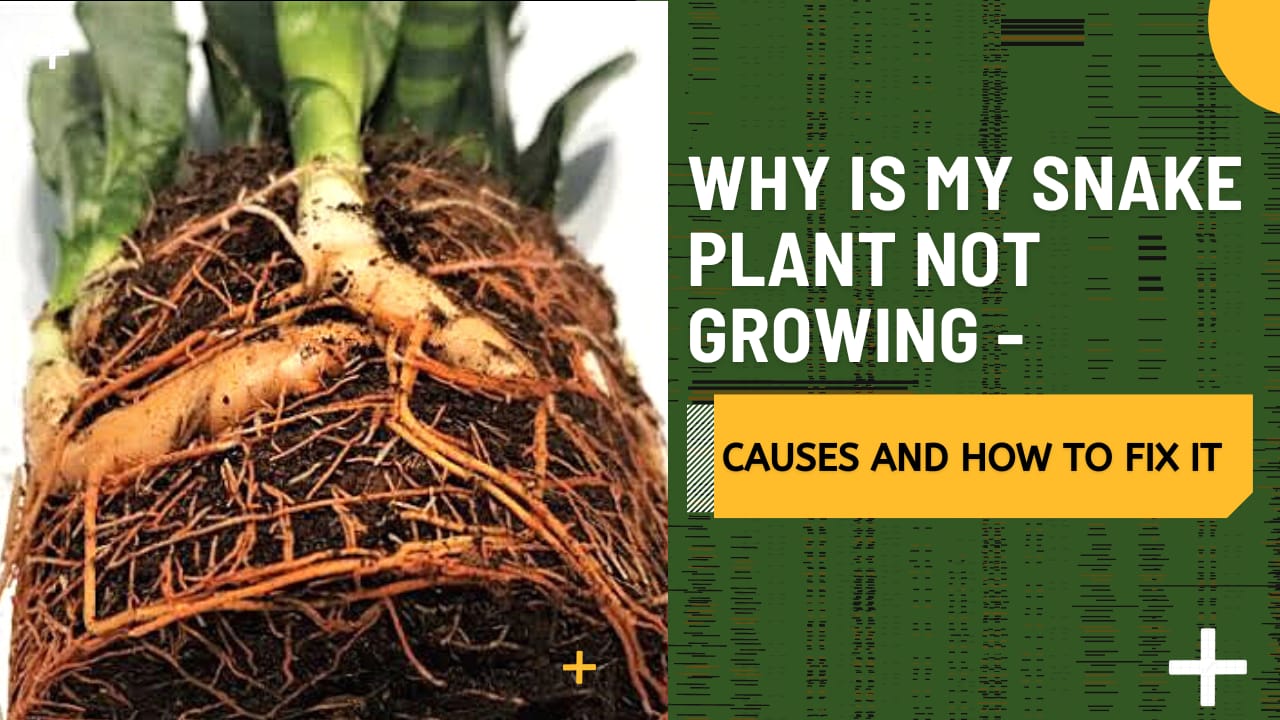
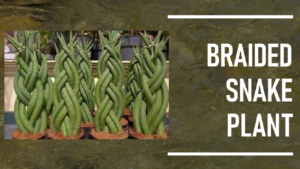
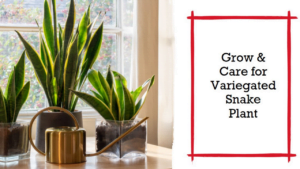

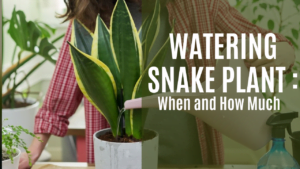


Great web site. A lot of useful info here. I?¦m sending it to some friends ans also sharing in delicious. And certainly, thanks on your effort!